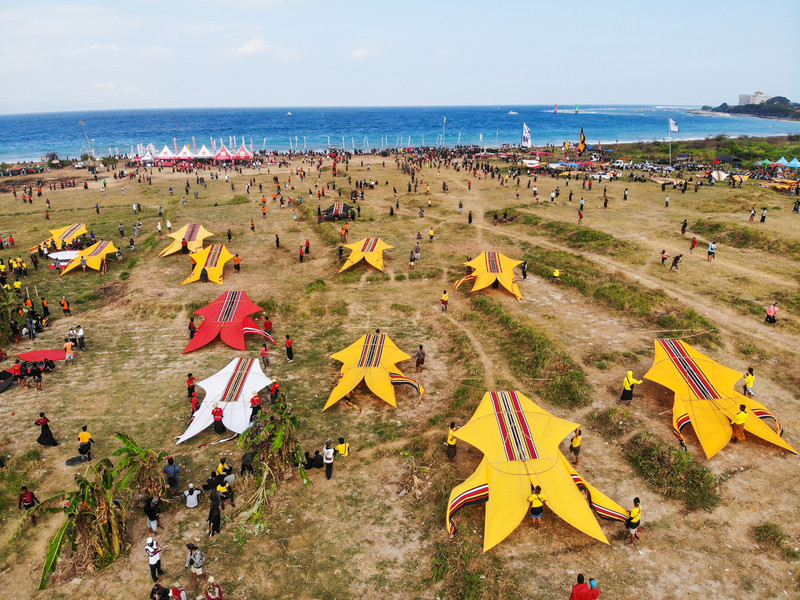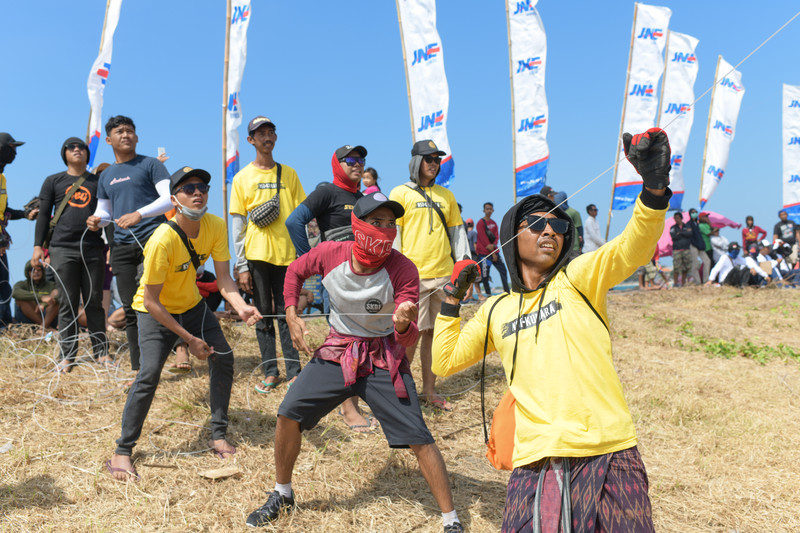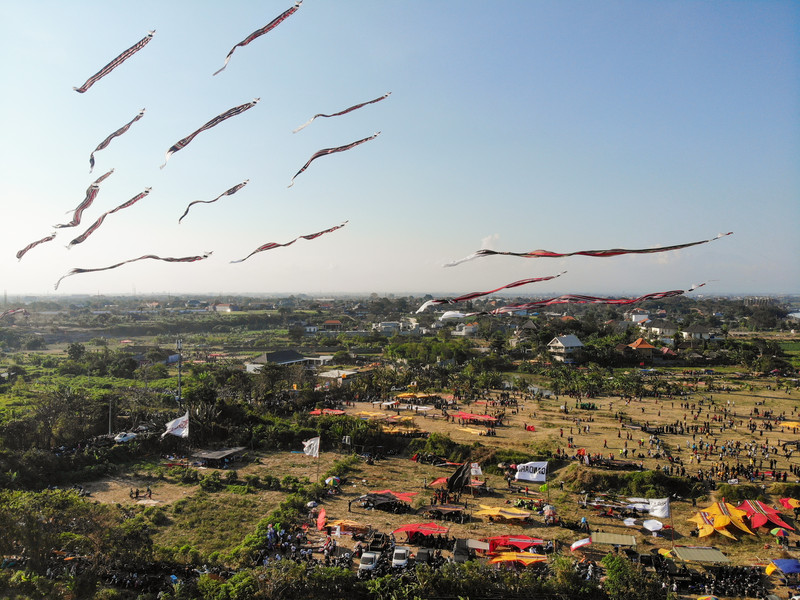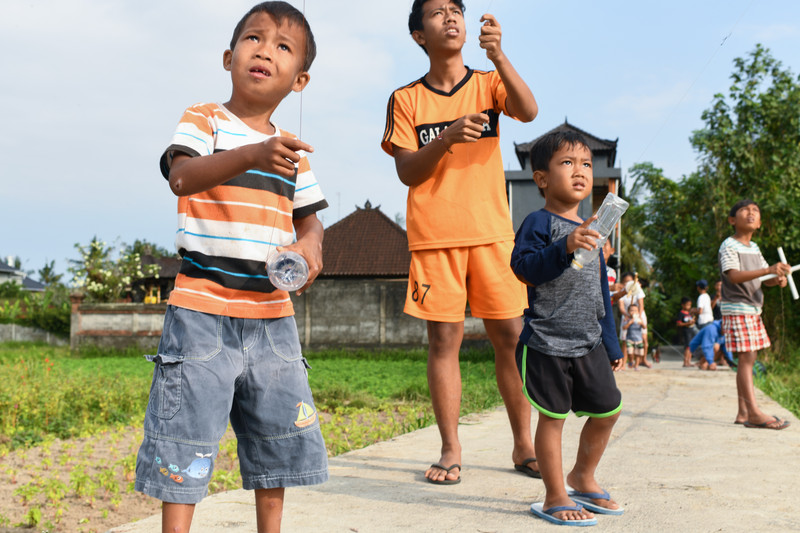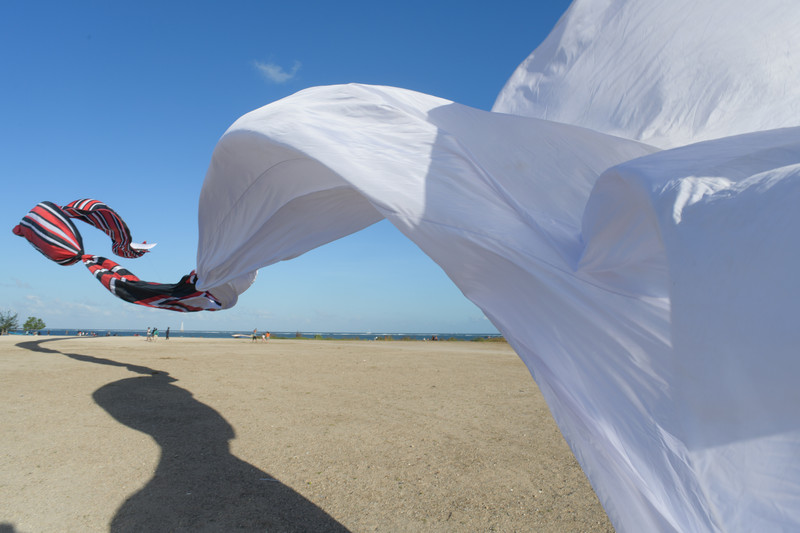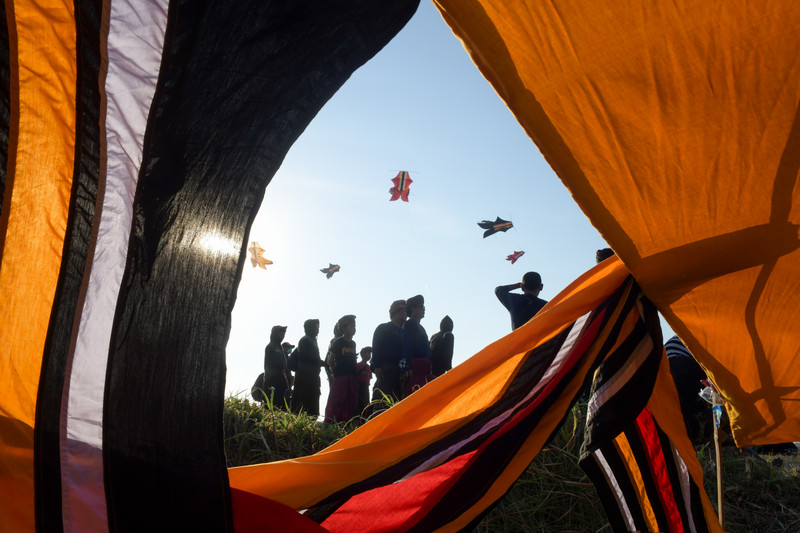Bali Kite Culture
© Casey KelbaughIn Bali, the wind begins to pick up from the southeast in June and blows with increasing strength and consistency through August. Cast your gaze skyward in nearly any direction and you are likely to see a kite – or a cluster of them – dancing with the breeze.
At the other end of the string you are going to find a group of boys or teenagers. Most start flying kites (layang layang) at a very young age and it is often through bonding with their fathers or grandfathers. For those who have the desire and aptitude, the methods of meticulously shaving down pliable strips of bamboo, sewing colorful pieces of silk and lashing the lightweight frames together with fishing line are passed down from generation to generation.
The Balinese are primarily Hindu and deeply spiritual. Kites were initially flown over the rice paddies as an agrarian tradition to ask the gods for abundance and a strong harvest. Accompanying the kites is often a hypnotic warbling sound created by mounted bamboo bows strung with two rattan strips. The upper one is higher-pitched and considered female (pardhana) while the lower-pitched rattan below is a male sound (purusha.) For a bumper crop to follow, balance is essential and these two sounds must be in harmony.
“I really should be working more - but now it’s kite season!” exclaims Deck Sotto with a sense of fatalism and a giddy grin. For Sotto, 43, an entrepreneur in the booming hospitality industry, kites are somewhat of an inevitability. His family, the Meranggi’s, are known throughout the island for their skill in kite-making and are the custodiBebean (fish-shaped) kite, with a wingspan of 10 meters and a length of 15 meters.
The following morning was the first of Bali’s many kite festivals and most of the excitement was around their Janggan (dragon-shaped) kite. With an ornate, delicately-carved mask dating from 1956, it is the only kite in Bali to be considered holy. It’s wingspan measures 7 meters across and is 10 meters in length, with a 150-meter tail – which alone weighs roughly 80 kilos. Sotto’s uncle will perform a Hindu ceremony to bless the kite, everyone involved with its flight and to ensure success on the Battlefield.
The respect this kite is given and the fascination by hordes of young boys is extraordinary – each pushing to get closer to behold it, make a prayer or snap a photo. During the kite’s blessing, Sotto goes into an ecstatic religious trance and needs to be brought back by his teammates with flower petals, chanting and holy water.
Along with Bebean and Janggan styles, the third traditional type of kite found in the festivals is Pecukan (leaf-like) are the most unwieldy and challenging to fly. Historically, the kites come in 3 colors: red, representing the Hindu god Brahma, the creator; white, for Vishnu, the preserver; and black, for Shiva, the destroyer. Today those are the only colors found in competition, with a recent addition of yellow, meaning balance. Balinese kite culture has even appropriated their own Hindu god, Rare Angon, who after harvesting the rice fields, descends to Earth accompanied by a flute that serves to summon the wind.
The fourth category of kite to be found on the Battlefield is Kreasi Baru, or New Creation. These playful, vibrantly-colored kites will take the form of sea creatures, firearms, Sanskrit words, airplanes, dollar symbols, planets, pirate ships, cartoon characters, motorbikes and Hindu deities.
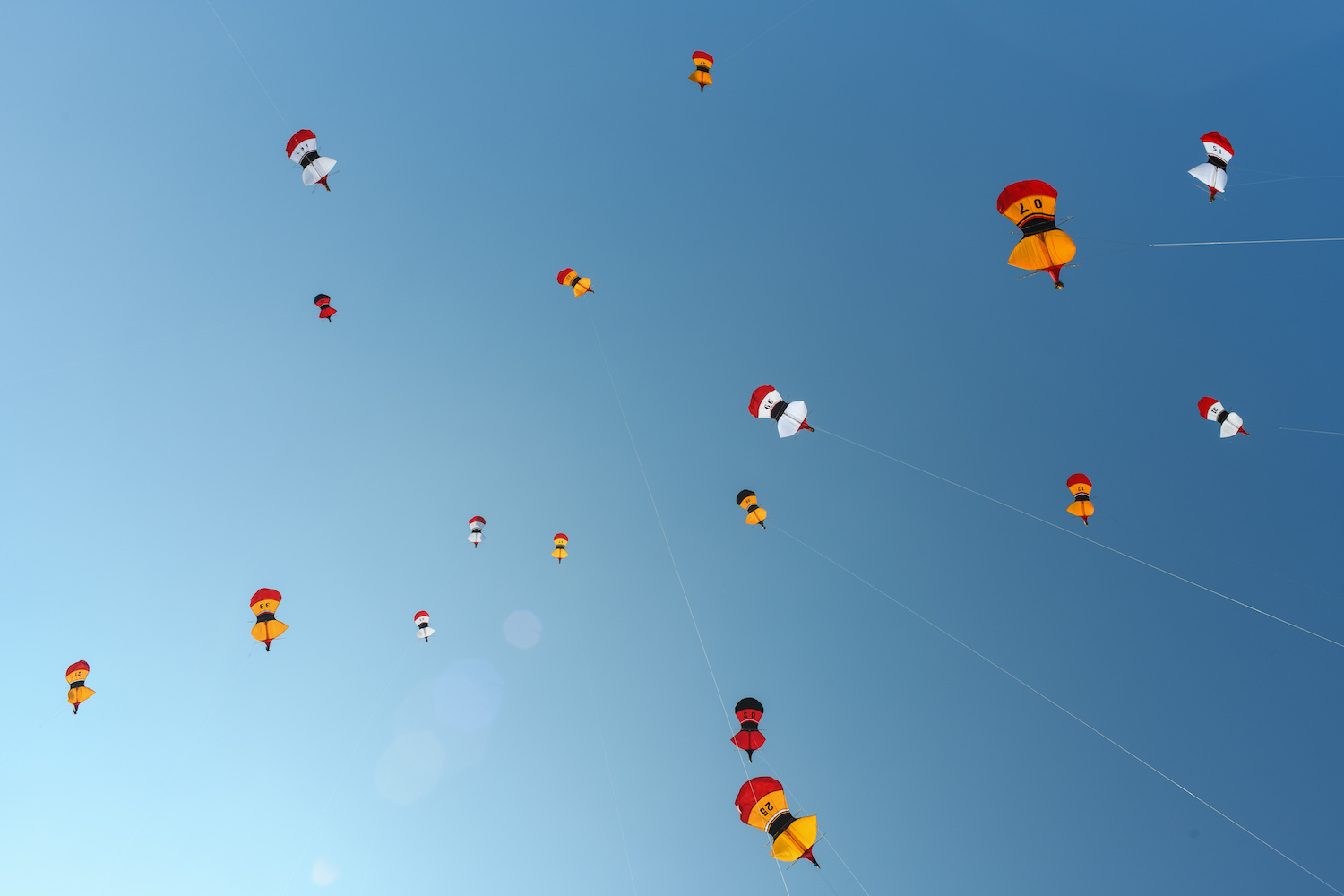

Surprisingly enough, the limiting factor in the growth of these kites has not been physics or materials – it is that Balinese roads are so narrow. Before 2006, when the Meranggi family invented a system in which the crossbar could be dismantled and folded in half, there was no way for a team to physically move the largest kites from their temple or community center to the Battlefield.
Beyond the weekend festivals, which primarily take place in and around the beach town of Sanur, kites of all shapes and sizes are flown day and night. In Djimbaran, boys attach LED lights to their kites before sending them up, tying the kitestring to a post to create a constellation of dancing stars until the next morning.
In following a kite string back down to terra firma, the odds of finding a tree stump at the other end are far greater than the hands of a female. While in the West, kite-flying is non gender-specific activity, in Bali it is nearly uniformly male.
The longtime festival commentator, Putu Nurhayati, 41, however, wants to make that a part of history. In 2015, she founded Team Srikandi, Bali’s first all-female kite team. Suffering taunts, ridicule and more than a little fascination from their male counterparts, Nurhayati and her teammates must focus on perfect festival execution to avoid scrutiny.
Kite season isn’t without its perils. I was told about an expat who was warned to “be careful, it’s kite season.” He laughed it off, but the very next day his wife was riding her motorbike with their son strapped to her chest through rice paddies when a thick line struck her below the chain and just above her son’s head. Thankfully, the line snapped before throwing them both from the bike.
On an island struggling under the weight of its own garbage and plastics crisis, kite season does not help. Many entry-level kites, purchased for a penny or less, are made from extremely thin, low-quality plastic and are made to last for an afternoon at best. The patrons are often the youngest boys, who leave them in the exact spot they crash for the final time, spoiling rice field and beach alike.
Bali’s tourism and development boom in recent years has pushed kite enthusiasts into increasingly smaller and less-desirable green spaces, particularly in urbanized areas. Rather than a fallow rice paddy, kids are often squeezed into empty lots full of rubble and garbage to play layang layang. Even the fabled Battlefield, beside the beach in Sanur, is unprotected. Despite efforts by Sotto and the kite community to have it recognized as a cultural site by the governor, it is rapidly being developed, putting this unique cultural and community celebration at risk.
click the link to see an edit of images
